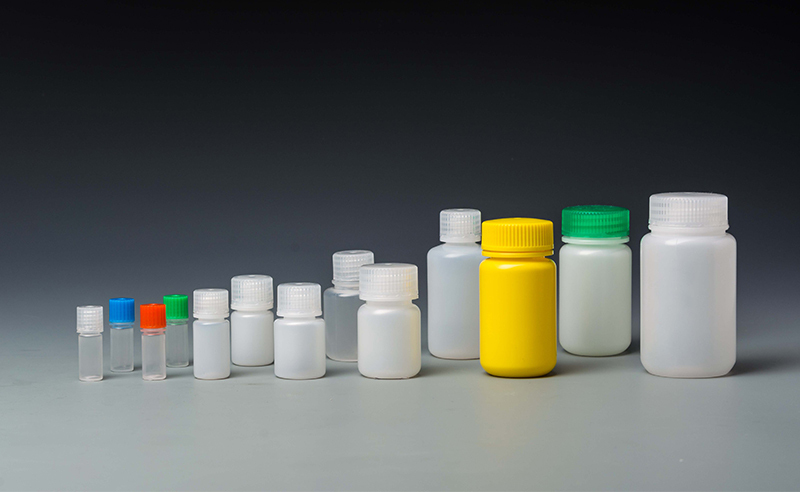A microsphere is not the same as a microcapsule, because microcapsules typically consist of a flexible (deformable) shell encapsulating a fluid, which might be liquid or gas. Microspheres always have a solid shell. Even if the microsphere is technically hollow (containing gas inside), its shape is not significantly flexible or deformable.
A microsphere is not the same as a microparticle, because microparticle is a general term that refers only to the size of the granular material and does not provide information on the shape. Microspheres are always round and spherical. There are no sharp edges, oblong shapes, or debris.

A microsphere is not the same as a nanopshere, because nanospheres have diameters on the nanoscale (typically between 1 nanometer and 1000 nanometers (1 micron)). Nano-diameters present a complete different characteristics, behaviors, and functionalities.
What are Microsphere Materials:
Microspheres are manufactured from various natural and synthetic materials. Glass microspheres, polymer microspheres, and ceramic microspheres are commercially available. Solid and hollow microspheres vary a lot in density and, therefore, are used for different applications. Hollow microspheres are typically used as additives to lower the density of a material. Solid microspheres have numerous applications depending on what material they are constructed of and what size they are.
Polyethylene, PMMA, and polystyrene microspheres are three most common types of polymer microspheres.

Polystyrene microspheres are typically used in biomedical applications due to their ability to facilitate procedures such as cell sorting and immuno-precipitation. Proteins and ligands absorb onto polystyrene readily and permanently, which makes polystyrene microspheres suitable for medical research and biological laboratory experiments.
Polyethylene microspheres are commonly used as a permanent or temporary filler. Lower melting temperature enables polyethylene microspheres to create porous structures in ceramics and other materials. High sphericity of polyethylene microspheres, as well as availability of colored and fluorescent microspheres, makes them highly desirable for flow visualization and fluid flow analysis, microscopy techniques, health sciences, process troubleshooting and numerous research applications. Charged polyethylene microspheres are also used in electronic paper digital displays.
Poly(Methyl Methacrylate) microspheres are often used as spacers, medical fillers, and cores for metal coated spheres in a wide variety of applications including porous ceramics, self assembled microfluidic devices, biomedical research, and life sciences.

Glass microspheres have historically been used as a filler and volumizer for weight reduction, retro-reflector for highway safety, additive for cosmetics and adhesives, with limited applications in medical technology. In recent years, glass microspheres have experienced excellent growth due to new high-value, high-growth industries that have emerged and the availability of high quality glass microspheres with perfect sphericity, tight tolerances and particle size distributions available on the market. These industries include biomedical, life sciences, microscopy, automotive, high-tech equipment and specialty applications.
Ceramic microspheres offer additional advantages of high glass transition temperature of over 1000 degrees Celsius, which makes them suitable for high temperature applications. Superior toughness and high resistance to wear makes ceramic microspheres desirable in high energy and high temperature processes and applications, where other materials would not survive.
Metal microspheres are often used as conductive spacers in bond line applications or as high density test projectiles.
Working with Microspheres Safely:

Microspheres require very different safety considerations compared to nanospheres, microcapsules, or non-spherical microparticles. Most microspheres are over 10 micron in diameter and completely inert which makes them a safe material to work with. The primary concern is usually housekeeping, because spilled microspheres would create a slipping hazard. Most microspheres do not present an inhalation hazard and health risks like nanospheres would, because the diameter of the microsphere is too big to reach our airways. When working with microspheres on the low end of the diameter range (1-10 micron), a dust mask and a hood exhaust is recommended as a precaution.
Depending on the microsphere material, it may be classified as combustible dust.
Combustible dust is any fine material that has the ability to catch fire and explode when mixed with air. Combustible dusts can be from:
- most solid organic materials (such as sugar, flour, grain, wood, etc. )
- many metals, and
- some nonmetallic inorganic materials.
Some of these materials are not “normally” combustible, but they can burn or explode if the particles are the right size and in the right concentration.
Working with combustible dust safely revolves mostly around housekeeping (ensuring that microspheres do not collect on surfaces such as rafters, roofs, suspended ceilings, ducts, crevices, dust collectors, and other equipment). Another critical component is to ensure no open flame, sparks, or sources of ignition are present near the area where combustible dust is being used.
We hope we have clarified what is a microsphere and the differences between microspheres and other particles. If there is still confusion and more clarification is needed, please don’t hesitate to reach out and let us know!




